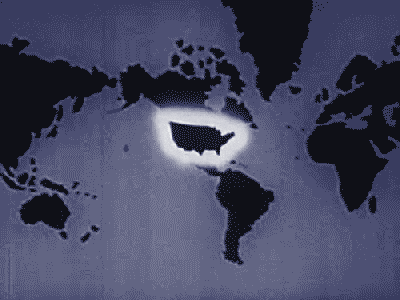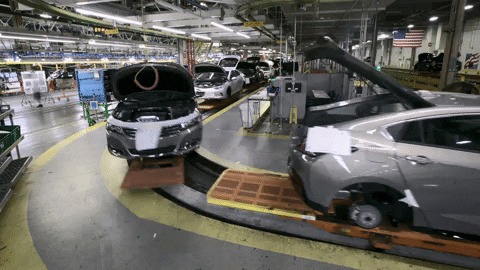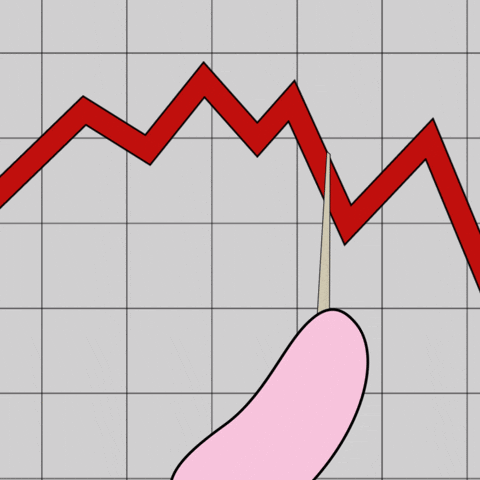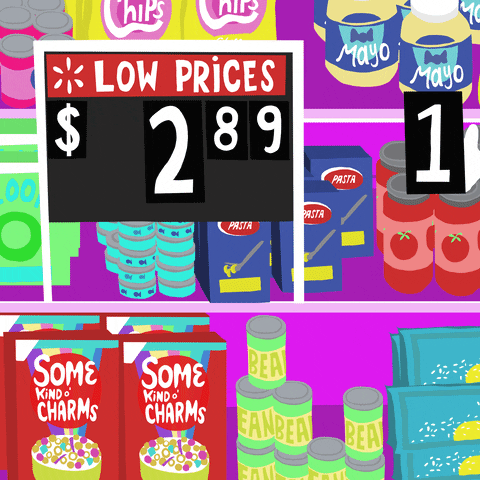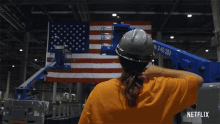Tariffs: America’s Return to Protectionism
Historical Lessons and Modern Implications
In a dramatic shift that echoes America’s pre-World War II economic policies, on April 2nd, 2025, President Trump unleashed a wave of tariffs unprecedented in the modern era. Just days after taking office for his second term, Trump imposed 10% tariffs on all Chinese imports, adding to the existing 19.3% tariffs from 2024. His subsequent “Liberation Day” policy pushed Chinese tariffs to a cumulative 54% alongside a universal 10% tariff on nearly all imported goods, followed by further “reciprocal” tariffs targeting dozens of countries across numerous sectors.
The scale of these tariff hikes has no parallel in modern global economics. As markets adjust and global trading partners respond, Americans face a critical question: What do these protectionist measures mean for the United States and the world economy?
America’s Historical Relationship with Tariffs
To understand our current moment, we must examine America's complex relationship with tariffs throughout history. This relationship has swung between extreme protectionism and greater openness, often reflecting the economic needs and political climate of each era.
The McKinley Era: Protection for Growing Industries
In 1890, President William McKinley implemented the Tariff Act, imposing average import tariffs of approximately 50% on most goods. The theory was straightforward: by giving domestic products a price advantage, Americans would buy more locally-produced goods, helping American industries grow and create jobs as the nation worked to play catch-up with European economic powers.
Initially, manufacturers celebrated as foreign competition diminished, American factories started earning more, and the nation’s GDP grew almost 9% in 1890. However, everyday Americans soon felt the pinch as both imported and domestic goods became more expensive. One clear example was the massive price increase of tinplates due to an increased duty from 30%-70%. With less foreign competition, American companies could charge higher prices. Families and farmers bore the brunt of these increases, while American agricultural exports faced retaliatory tariffs from European nations, contributing significantly to the Panic of 1893, one of the worst economic depressions of the 19th century.
In 1897, McKinley signed the Dingley Act, which pushed tariff rates even higher to an average of 52% on a wide range of imported goods. The economy bounced back from the Panic of 1893, with America’s balance of trade increasing fourfold and industrial production jumping 17.81% from 1897-1898. During this time, GDP showed an impressive 7.58% increase in 1897 alone. However, with all that success, new problems arose. America was producing far more than the country could consume, and to continue growing, the U.S. needed new buyers beyond itself. However, other countries remained bitter about America’s high tariffs and weren’t eager to open their markets unless the U.S. agreed to lower its own barriers. Without foreign buyers, excess production risked dragging prices down and forcing factories to close.
On the other side, the Dingley Act introduced reciprocity – a key innovation allowing the president to negotiate mutual tariff reductions of up to 20% with other countries. This was needed to open up new markets for American exporters without fully abandoning protection for industries that still needed it. However, this vision of balanced trade was short-lived.
In his final speech before his assassination, McKinley advocated for a pivotal shift in trade policy, declaring that "the period of exclusiveness is passed." He recognized that building friendly trade relationships could prevent the destructive cycle of retaliatory tariffs that often damaged both nations' economies. McKinley's support for reciprocity treaties stemmed from his belief that cooperative economic engagement reflected "the spirit of the times," while economic isolation and retaliation ran counter to progress and prosperity. Notably, he suggested that certain tariffs had served their purpose and could be eliminated to help American exporters compete in global markets. Through his political evolution, McKinley came to view tariffs not as rigid protectionist barriers but as flexible diplomatic instruments that could be adjusted or used as bargaining chips to secure broader trade advantages. His vision extended beyond mere economic benefits—he increasingly understood that nations bound by mutually beneficial commerce were less likely to resolve disputes through military conflict, making trade a powerful instrument for maintaining peace.
After McKinley’s assassination, President Theodore Roosevelt allowed reciprocity to take shape. The U.S. signed several trade deals, including agreements with France and Cuba, reducing import tariffs with both countries to lower tariffs on U.S. exports. This evolution showed that while protectionism had its advantages in boosting American production and exports, rigid protectionism without flexible reciprocity had clear limits. Economic strategies don’t have to remain frozen in time; what works for one phase of development may become harmful in the next. Once American industries had grown strong, they didn’t need the same level of protection – they needed access to global markets.
Despite these trade deals, the overall tariff levels set by the Dingley Act remained high. The significant cuts many Americans expected never materialized, and everyday goods remained expensive. Progressive reformers argued that high tariffs were helping monopolies and big manufacturers charge inflated prices while staying shielded from foreign competition.
The Swing Between Protection and Openness
The early 20th century saw significant shifts in tariff policy. When Woodrow Wilson won the presidency in 1912, his administration passed the Underwood-Simmons Tariff Act – one of the most dramatic tariff reductions in U.S. history. This legislation brought the average tariff on dutiable imports down from 40% to 27%, the steepest cut since before the Civil War, making many goods cheaper for American consumers.
But there was a catch. Since tariffs had been the government’s main source of revenue for more than a century, a new funding mechanism was needed. This came through the newly ratified 16th Amendment, which gave Congress the power to collect a federal income tax. The Underwood Act included the first modern income tax law, starting modestly with just 1% on incomes over $3,000 and up to 6% on incomes over $500,000. This provided the government with a stable revenue stream that didn’t depend on taxing imports, allowing for lower tariffs without risking a budget crisis.
Then, World War I dramatically transformed global trade patterns in ways nobody anticipated. As European powers diverted their manufacturing toward wartime materials and millions of farmers were called to military service, European agricultural and industrial production plummeted. This created a vacuum that American businesses eagerly filled. However, when peace returned, European industries began exporting heavily, increasing competition for American factories. Meanwhile, American farmers who had ramped up production to feed Europe during the war faced disaster when demand suddenly dropped, with bushels of corn decreasing in price sevenfold during this time. Prices crashed, leaving many with unsold crops and mounting debt they were encouraged to take during the war.
In response, tariffs came back under the Fordney-McCumber Tariff Act of 1922, which supported farmers and manufacturing industries. This legislation introduced an important innovation: it gave the president authority through the Tariff Commission to adjust rates by up to 50% based on the difference in production costs between the U.S. and its trading partners – a concept that would later evolve into more formal reciprocal trade negotiations.
In the short term, these tariffs gave farmers and manufacturers breathing room, but new problems quickly emerged. High tariffs made it harder for European nations to sell their products in the American market, resulting in fewer dollars flowing back to Europe – money they needed to repay war loans to the U.S. This strained global economic ties and helped fuel resentment overseas. McKinley’s early vision of shielding American industries from foreign competition was still alive, even as his later ideas about openness and reciprocity were gaining ground in policy circles.
The Disaster of Smoot-Hawley
By the late 1920s, warning signs were flashing across the American economy. Farm incomes had been falling for years, industrial output was slowing, and then, in 1929, the stock market collapsed and the Great Depression commenced. What shortly followed was a chain reaction: banks failed, credit dried up, businesses shut down, and unemployment skyrocketed.
President Herbert Hoover had campaigned in 1928, promising to support American agriculture, which had been struggling even before the crash. The initial congressional proposal was to raise tariffs on farm products to boost prices and protect farmers from cheap foreign competition. However, when the tariff debate opened, it didn’t stay limited to agriculture. Leaders across all industries demanded protection for their own goods, and for some products, including glassware, tobacco, and sugar, tariffs hit record highs.
The resulting Smoot-Hawley Tariff Act of 1930 became a massive wall around the U.S. economy, driven more by lobbying than sound economic reasoning. The results were disastrous. Countries around the world imposed retaliatory tariffs on dozens of U.S. goods—25 nations in all—and global trade volumes plummeted by 66%. The United States lost access to key foreign markets just when it needed them most. The Smoot-Hawley Act became a textbook example of how protectionism can go horribly wrong, deepening and prolonging the Great Depression.
Roosevelt’s New Direction
In 1934, President Franklin Roosevelt signed the Reciprocal Trade Agreements Act (RTAA), championed by Secretary of State Cordell Hull. Hull was a committed free trader who believed high tariffs not only deepened the Depression but also fueled international tensions. He saw free trade as both a tool for economic recovery and peace.
The RTAA broke dramatically from the past. For the first time, Congress gave the president the authority to negotiate bilateral tariff reduction deals with other countries without requiring individual congressional approval for each agreement. This made trade negotiations quicker and more responsive. Importantly, these weren't one-sided cuts—America would lower tariffs only if the other country did the same. The RTAA didn't eliminate tariffs completely, but gradually reduced them from an average rate of 59% to 37% on all dutiable imports by the end of the 1930s.
During this period, the U.S. government was moving away from isolation and recognizing that economic cooperation could be part of its long-term strategy. In Hull's view, countries that traded with each other were less likely to go to war. The U.S. began building trust that trade could be mutually beneficial, recognizing that America couldn't remain strong if the rest of the world was falling apart. These trade relationships helped forge alliances that would prove crucial during World War II.
Post-War Trade Architecture
In 1941, the Atlantic Charter, signed by Roosevelt and Churchill, outlined shared goals for the postwar world, including freedom of trade. In 1944, as the war was nearing its end, world leaders met at Bretton Woods to plan the structure for the post-war global economy. There, the U.S. helped establish the International Monetary Fund and World Bank, though tariffs and trade rules were still handled separately.
By 1947, with the war over and the world rebuilding, the U.S. stepped forward with a clearer vision, helping to launch the General Agreement on Tariffs and Trade (GATT). This agreement was the first global framework for managing trade and brought dozens of countries together around shared rules, gradual tariff cuts, fair treatment of foreign goods, and a system to negotiate future changes. While not perfect—it had loopholes, and many countries felt left out—it was an important first step.
In the late 20th century, average tariffs on industrial goods dropped to under 5%—a massive fall from the nearly 50% rates under McKinley just a century earlier. But this didn't mean tariffs disappeared entirely. The U.S. kept certain defenses in place, and some sectors were kept off-limits to full liberalization. For example, textiles and apparel were restricted for decades under the Multi-Fibere Arrangement.
There were also legal tools baked into U.S. trade laws that allowed tariffs to be applied temporarily or selectively when needed:
Anti-dumping Duties: Protectionist tariff imposed on foreign imports that it believes are priced below fair market value.
Countervailing Duties: Import duties imposed to offset the unfair advantage that foreign governments provide to their exporters through subsidies.
Safeguard Tariffs: Import restrictions used to protect domestic industries from a surge in imports that causes or threatens injury.
Even in a free-trade era, protectionist levers were always ready to be pulled.
Modern Presidential Use of Tariffs
Throughout the post-war period, presidents have used tariffs selectively to address specific challenges with varying results:
In 1971, as inflation rose and the trade deficit widened, President Nixon took drastic steps in what became known as the "Nixon Shock." He suspended the dollar's convertibility to gold and slapped a 10% surcharge tariff on all imports. The goal was to force major trading partners, especially Japan and Western Europe, to adjust their currencies upward and make U.S. exports more competitive. It worked in the short term—within months, key countries agreed to currency adjustments under the Smithsonian Agreements, and Nixon lifted the import surcharge just four months later. This demonstrated that the president could use tariffs to strong-arm economic change when needed.
In the 1980s, as Japan's economy boomed and its exports dominated global markets, President Reagan negotiated Voluntary Export Restraints with Japan. These weren't official tariffs but worked similarly—Japan agreed to limit the number of cars sent to the U.S., giving American automakers time to catch up. This was a way to ease economic pressure without destroying trade relations.
When Harley-Davidson was on the verge of collapse in 1983 due to Japanese competition, Reagan imposed a 45% tariff on imported heavyweight motorcycles. This steep, targeted measure proved effective—Harley-Davidson recovered, modernized, and eventually requested that the tariff be lifted early.
In 1987, when Japan violated a semiconductor trade agreement, Reagan responded with 100% tariffs on $300 million worth of Japanese electronics, including TVs, computers, and power tools. The move got Japan's attention, and the issue was eventually resolved. While Reagan often spoke about open markets and competition, he wasn't afraid to use hard measures when American industries were threatened.
Under President George W. Bush, the struggling U.S. steel industry received protection through temporary tariffs ranging from 8% to 30% on a wide range of steel imports in 2002. These were meant to last three years, giving domestic producers time to modernize. While steelmakers and labor unions welcomed the move, the backlash was swift. The EU and other partners imposed retaliatory tariffs carefully aimed at politically sensitive U.S. exports, such as orange juice from Florida and auto parts from Michigan. Meanwhile, American manufacturers who depended on cheap steel—especially in the auto, appliance, and construction sectors—faced higher costs, shrinking margins, and job cuts. While the steel industry may have gained a few thousand jobs, industries that relied on steel suffered significantly. Some estimates suggest nearly 200,000 jobs were lost in downstream sectors due to higher input costs, hurting the broader economy. Bush ultimately ended the tariff program early under political pressure.
Trump’s Tariff Revolution
President Trump's approach to tariffs represents a return to pre-WWII economic thinking. His core belief mirrors McKinley's initial stance: that the U.S., with its massive consumer market, holds the upper hand in trade negotiations. If other countries want access to American buyers, Trump believes the U.S. can use that as leverage.
In 2018, during his first term, Trump made his first major tariff move under Section 232 of the Trade Expansion Act of 1962. He declared that imported steel and aluminum posed a national security threat, arguing that if U.S. production of these materials collapsed, it might jeopardize the country's ability to build ships, planes, or weapons in wartime. Based on this logic, his administration imposed a 25% tariff on steel and a 10% tariff on aluminum from most countries. What made this particularly striking was that even close allies were not exempted.
U.S. steel mills initially saw a boost as prices rose and capacity increased. Some companies announced expansions or reopened plants. However, downstream industries—those that use steel and aluminum as inputs—experienced contraction. Car manufacturers, aerospace firms, and construction companies faced higher input costs. Some passed these costs on to consumers, while others cut back on hiring or investment.
Now, in 2025, Trump has dramatically expanded this approach with broader and deeper tariffs, particularly focusing on China but extending to most trading partners. The scale of these new tariffs represents a fundamental departure from decades of U.S. trade policy.
The Economic Calculus: Beyond Simple Narratives
Conventional wisdom often suggests that increased tariffs inevitably raise prices for consumers and constrain economic growth. However, historical evidence presents a more nuanced picture. In America's past, tariffs served as a primary revenue source for the federal government before the establishment of the income tax. This historical context raises an important question for contemporary policy: could a strategic rebalancing of tax structures offset the potential consumer costs of protective tariffs?
The relationship between tariffs, corporate taxation, and consumer purchasing power deserves careful consideration. If a nation simultaneously reduces income and corporate taxes while increasing tariffs, there may exist a theoretical equilibrium point where enhanced consumer purchasing power (resulting from lower domestic taxation) counterbalances the price increases attributed to import tariffs. This recalibration could potentially preserve economic vitality while achieving strategic trade objectives.
The Costs of Protectionism
Implementing protectionist measures through tariffs carries several significant drawbacks that policymakers must weigh carefully:
First, protectionism risks undermining domestic competitiveness. Free markets provide essential testing grounds where businesses must innovate and improve to survive. Tariff protection can function as an artificial crutch for American enterprises, removing the competitive pressure that drives innovation and efficiency. Without these market-driven incentives, protected industries may grow complacent and fall behind global standards of excellence.
Second, tariffs typically increase consumer costs across affected sectors. The 2016-2020 trade policies illustrate this dynamic clearly. When the administration increased tariffs on Chinese imports, China retaliated by substantially reducing purchases of American agricultural products—historically among their largest imports. This retaliatory action necessitated government intervention through support payments to American farmers totaling approximately $28 billion in 2018 and 2019, representing an unanticipated increase in government spending.
Third, escalating tariff conflicts can damage international relationships and trigger broader retaliatory measures beyond simple counter-tariffs. During trade disputes, nations may target intellectual property protections—a particularly vulnerable point for American enterprises that rely heavily on IP rights. If countries like China were to more aggressively disregard intellectual property conventions while leveraging their manufacturing advantages, they could undermine the foundation of many American companies' competitive edge.
The Strategic Case for Tariffs
Despite these risks, targeted tariff policies may offer important strategic advantages in the current global context:
A primary benefit involves reshoring or "friendshoring" American manufacturing capabilities for vital technological components. There is an imminent need to secure domestic or allied sources for energy production, raw materials, and semiconductor manufacturing—all critical elements of technological and economic security. Tariffs can serve as a policy mechanism to incentivize this strategic reshoring of essential industrial capacity.
As Scott Bessent, the Secretary of Treasury, argues, tariffs can also function as leverage to bring countries to the negotiating table for a comprehensive global economic reordering—effectively creating a new Bretton Woods or Treaty of Versailles for the 21st century. This approach envisions assembling the world's top mercantile nations to forge a new economic consensus specifically addressing the challenges posed by China's economic model. By using America's market power strategically through tariff policies, policymakers could potentially catalyze a coalition of like-minded nations committed to more balanced and reciprocal trade relationships.
Second, tariff revenue could enable a reduction in income taxes for consumers, creating a potentially transformative economic recalibration. The conventional wisdom that tariffs inevitably increase prices and shrink economies deserves reexamination. A strategic approach could simultaneously reduce income and corporate taxes while increasing tariffs on specific imports. There may exist a theoretical breakeven point where enhanced consumer purchasing power (resulting from lower domestic taxation) could offset price increases attributed to import tariffs, particularly if those tariffs are strategically targeted.
Additionally, Bessent and like-minded economists advocate for a controlled "releveraging" of the financial system—reducing certain regulatory restrictions that limit banks' ability to extend credit to businesses and individuals. This approach would inject more capital and liquidity into markets, potentially encouraging investment in new businesses, job creation, and employment growth. Maintaining low unemployment remains paramount, and a carefully calibrated combination of tariffs and financial liberalization could potentially achieve this while advancing strategic trade objectives.
Third, the United States faces approximately $9.2 trillion in financing needs for 2025, making the management of interest rates on government debt a critical priority. Economic uncertainty typically lowers the 10-year Treasury yield, which benefits government borrowing costs but simultaneously signals increased recession risk. Strategically implemented tariffs, as part of a broader economic strategy, could potentially help manage this delicate balance.
By generating revenue and reshaping trade relationships in ways that strengthen domestic production, tariffs could contribute to economic stability while addressing structural imbalances. The key challenge lies in implementing these measures without triggering the very recession risks they aim to mitigate. This requires careful coordination of trade, fiscal, and monetary policies—using tariffs as one tool within a comprehensive economic strategy rather than as a standalone solution to complex economic challenges.
Beyond Economics: The Geopolitical Dimension
Today's tariff debate has profound geopolitical implications extending far beyond balance sheets. The post-World War II trading system that America helped establish wasn't merely an economic framework—it represented a community of nations with shared interests designed to reduce conflict likelihood.
As the United States reconsiders its role as the champion of this system, other nations must reevaluate their positions. China, despite its own protectionist practices, has increasingly positioned itself rhetorically as a defender of global trade rules. European allies, caught between American tariffs and Chinese competition, face difficult choices about their economic alignments and future.
The strategic concerns extend to specific market practices as well. When countries subsidize manufacturing to artificially reduce prices and capture market share—only to later increase prices after establishing dominance—they create challenging network effects that make market diversification difficult. This approach mirrors strategies employed successfully by companies like Amazon in e-commerce and Uber in transportation services, where initial price advantages created lasting market control. In international trade, such practices enable dominant producers to manipulate prices strategically to eliminate competition.
The current tariff escalation also coincides with heightened concerns about intellectual property rights and technology transfer. In scenarios of intensifying trade conflicts, countries might retaliate not just with tariffs but by weakening IP protections or restricting market access in sensitive sectors. For American companies heavily dependent on intellectual property, this poses serious long-term risks that extend well beyond immediate economic calculations.
Conclusion: Managing the Trade-Offs
What history teaches us about tariffs isn't that they're inherently good or bad, but that their effectiveness depends on specific circumstances and implementation. McKinley's tariffs may have helped nurture America's growing industries in the 1890s, but they became counterproductive once those industries matured. The Smoot-Hawley tariffs proved disastrous during the Depression, while Roosevelt's more nuanced approach helped rebuild the global economy after World War II.
The question facing America today isn't whether tariffs work in the abstract, but whether today's tariffs serve our current economic needs and long-term interests. If history is any guide, we should expect short-term benefits for protected industries, higher costs for consumers and downstream manufacturers, retaliatory measures from trading partners, and a reconfiguration of global supply chains.
Perhaps what America needs most isn't just a trade policy, but a renewed sense of ambition—the kind that pioneered the West, created the Manhattan Project, landed on the Moon, and unleashed the information technology revolution. While our political debates often center around fixing past mistakes, we speak less about where America could lead the world next.
As we navigate this new era of trade relations, our approach should be guided not by nostalgia for an earlier economic era but by a clear-eyed assessment of America's place in today's global economy and our vision for tomorrow.





